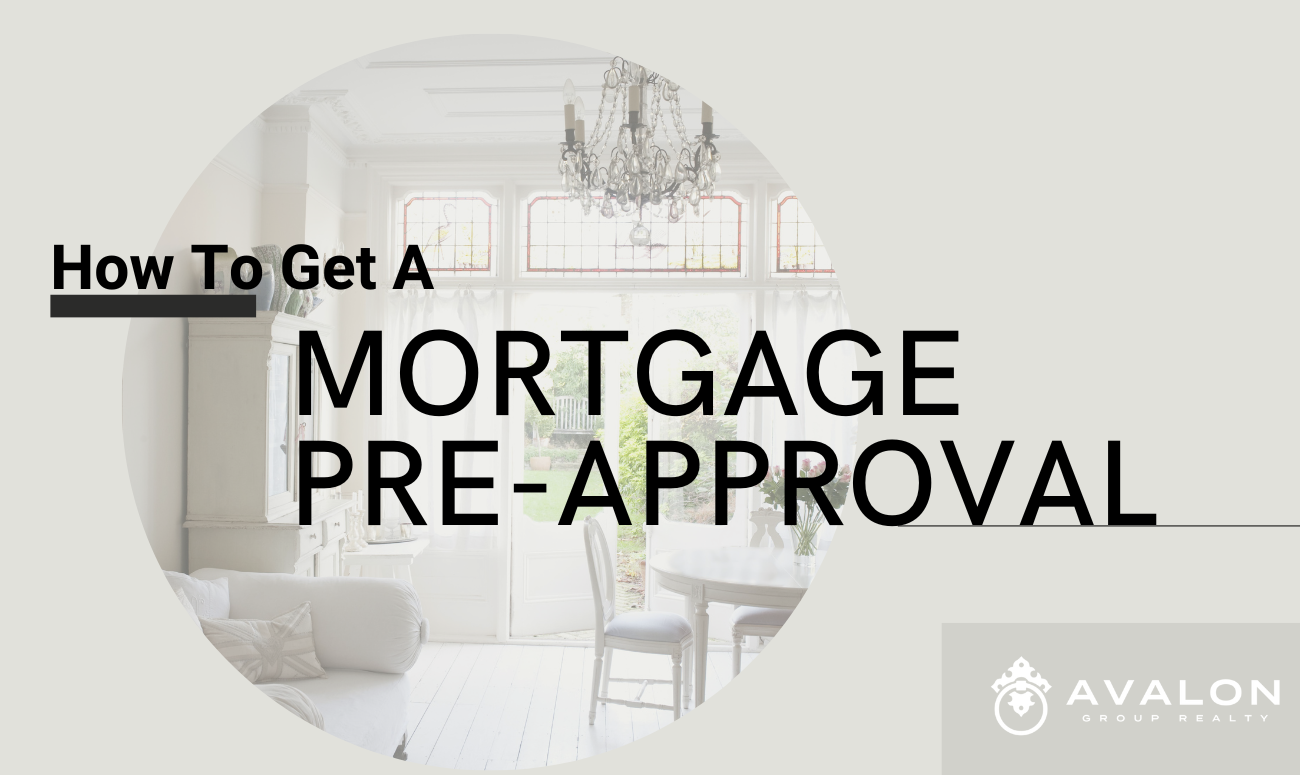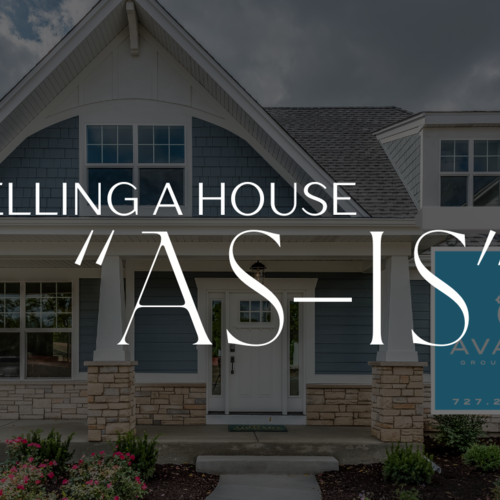How to Get Mortgage Pre-Approval: The Difference Between Mortgage Pre-Approval and Pre-Qualification
Getting pre-approved for a mortgage is one of the most important steps for homebuyers. We have helped over 300 homebuyers in St Petersburg and Tampa get pre-approved and into homes. However, pre-approval is often confused with pre-qualification. While they may sound similar, there are crucial differences between being pre-approved versus prequalified for a mortgage loan. Understanding these differences is vital when preparing to buy a home.
How to Get Mortgage Pre-Approval: What is Mortgage Pre-Approval?
Mortgage pre-approval is a thorough assessment of a buyer’s finances to determine their borrowing capacity. According to the Federal Reserve, pre-approval involves verifying income, employment, financial resources, and a full credit evaluation.
Specifically, the pre-approval process confirms a buyer’s ability to qualify for and repay a mortgage loan. Lenders assess factors like credit score, debt-to-income ratio, employment history, and more. Pre-approval also helps buyers understand how much they can borrow and what rates they may qualify for.
In competitive housing markets, pre-approval gives buyers an edge in making offers since sellers know they can secure financing. While pre-approval doesn’t guarantee final loan approval, it greatly increases the likelihood.
How to Get Mortgage Pre-Approval: What Factors Do Lenders Consider for Pre-Approval?
When pre-approving borrowers, lenders carefully examine several financial aspects:
Credit History and Credit Scores: Lenders review your credit reports from the three major bureaus to assess your payment history and confirm your scores meet requirements.
Debt-to-Income (DTI) Ratio: Lenders calculate your DTI based on monthly debts versus gross monthly income. Most require a maximum DTI of 43%.
Employment History: Documentation of your current job and previous employment helps confirm employment stability.
Income Verification: Recent pay stubs and W-2s validate your income level and continuity. Self-employed borrowers provide additional documentation.
Assets and Cash Reserves: Bank and investment statements prove you have funds for a down payment and closing costs. Reserves ensure ability to make mortgage payments if income disruption.
By examining these areas, lenders can accurately determine loan eligibility and affordable mortgage amount. Pre-approval provides confidence you meet qualifications.
How to Get Mortgage Pre-Approval: How Does the Pre-Approval Process Work?
Gaining an official pre-approval letter involves submitting information and documents for review. Here are the key steps:
Initial Application: You’ll complete a mortgage application with personal details, financial summaries, desired loan amount and terms. This gives the lender an overview.
Document Submission: You’ll provide supporting paperwork to validate the details in your application. This includes bank statements, tax returns, pay stubs, W-2s and potentially other records.
Underwriting Review: An underwriter will thoroughly analyze all submitted documentation and verify your financial standing aligns with application claims.
Credit Checks: Soft credit inquiries won’t impact scores much initially. But expect hard checks later as lenders re-confirm your creditworthiness. These may briefly lower scores.
Pre-Approval Letter: Once the underwriter finishes validation, you’ll receive an official pre-approval letter stating the loan amount and terms you qualify for based on the review.
Most lenders can complete the pre-approval process within a few business days up to a couple of weeks depending on complexity.
How to Get Mortgage Pre-Approval: What is Mortgage Pre-Qualification?
In contrast to thorough pre-approval, mortgage pre-qualification is more informal. Pre-qualification simply provides an estimate of what you may qualify for based on unverified financial details.
Lenders derive pre-qualification amounts from limited input including income, debts, credit scores, and minimal financial history. But unlike pre-approval, they do not confirm employment, verify income sources, or evaluate your actual credit reports at this stage.
Pre-qualification gives you and the lender a ballpark idea of potential mortgage eligibility. However, sellers are unlikely to take pre-qualification letters seriously since no validation has occurred.
How to Get Mortgage Pre-Approval: Key Differences Between Pre-Approval and Pre-Qualification
While the terms sound alike, mortgage pre-approval and pre-qualification differ significantly:
How to Get Mortgage Pre-Approval: Pre-Approval Pre-Qualification
Thorough review of finances Limited financial details provided
Income and employment verified Income and job details not verified
Actual credit reports examinedCredit scores only considered
Strong indication of loan eligibility Rough estimate of potential eligibility
Trusted by sellers Not taken as seriously by sellers
As you can see, pre-approval is a superior position demonstrating true mortgage readiness over simple pre-qualification. Sellers view pre-approved buyers as truly viable.
How to Get Mortgage Pre-Approval: Why Get Pre-Approved?
Given the effort involved, why should buyers bother getting pre-approved? There are a few compelling reasons:
– Head start on loan process: Pre-approval gets your loan underway so that when you make an offer, formal approval moves faster.
– Know your budget: Pre-approval lets you know your exact price range so you don’t waste time looking at homes you can’t afford.
– Increase offer strength: Sellers prefer contingencies are limited, so pre-approval offers are more attractive.
– Lock in rates: As rates rise, pre-approval locks your rate in for 60-90 days typically.
– Opportunity to improve credit: If score issues arise, you have time to resolve them before buying.
Overall, pre-approval makes for a smoother homebuying journey by confirming your financing early on. You’ll house hunt confidently knowing what you can spend.
How to Get Mortgage Pre-Approval: How to Get Pre-Approved for a Mortgage
If you’re ready to pre-approve, follow these steps:
1. Compare multiple lenders: Contrast options like banks, credit unions, and mortgage brokers to find the best rates and fees.
2. Gather your documents: Have pay stubs, tax returns, bank statements and anything else lenders may need handy.
3. Submit your application: Provide all personal and financial specifics the lender requests to begin review.
4. Send supporting documentation: Supply copies of your financial records to validate the details you provided.
5. Get pre-approved: Expect to receive your official pre-approval letter within a couple weeks at most.
6. Shop with confidence: With your letter in hand detailing financing terms, start hunting for homes in your price range!
Ask lenders these key questions as you choose where to apply:
– What loan types do you offer? (FHA, USDA, VA, conventional, etc.)
– What are your rates and fees like? (Origination & closing costs)
– How long does pre-approval take?
– What documents do you require?
– How long are pre-approvals valid?
– Is there a cost for pre-approval?
How to Get Mortgage Pre-Approval: Types of Mortgages to Explore
As you go through pre-approval, deciding on a mortgage type is essential too. First-timers should consider:
Conventional Loans: The most common loans requiring at least 5% down payment. No mortgage insurance needed once you reach 20% equity.
FHA Loans: Backed by the Federal Housing Administration and only requiring 3.5% down. Ideal for those with lower credit scores.
VA Loans: Provided by the Department of Veterans Affairs to service members and spouses. No down payment or mortgage insurance required. Credit score requirements still apply.
USDA Loans: Loans in rural areas guaranteed by the U.S. Department of Agriculture. No down payment required and flexible credit standards.
Jumbo Loans: For luxury homes over $647,200 where conforming loan limits don’t apply. Typically need 10-20% down and excellent credit.
Compare mortgage types to decide what best suits your financial situation and home buying goals.
How to Get Mortgage Pre-Approval: Documents Needed for Mortgage Approval
While pre-approval begins the loan process, lenders require further documentation before final approval:
– Pay stubs covering the last 30 days
– W-2 forms from the previous two years
– Federal tax returns from the previous two years
– Asset statements showing reserves post-closing
– Credit reports showing continued responsible management
– Signed purchase agreement for the home
– Appraisal report assessing home value
Submit these quickly after an offer is accepted to keep loan approval moving swiftly. Also inform your lender regarding any life changes like a job switch so they can appropriately account for the changes.
How to Get Mortgage Pre-Approval: Stay Diligent After Pre-Approval
Don’t let your guard down just because you’re pre-approved! Until you close and gain the keys, avoid moves hurting your eligibility:
– Making a major purchase (car, boat, etc) adding significant debt
– Swapping jobs or experiencing employment gaps
– Having accounts sent to debt collectors
– Applying for and maxing out new credit cards
– Depositing questionable sums in bank accounts
While pre-approval brings you much closer to getting a home loan, lenders can still revoke approval if concerning issues emerge impacting ability to repay. Maintain your sound financial habits throughout the process.
Also ensure your pre-approval letter doesn’t expire before finding a home. You usually have 60-90 days but lenders can extend if you request.
How to Get Mortgage Pre-Approval: How Pre-Approval Strengthens Your Offer
Pre-approval empowers you to make compelling offers more likely to beat out the competition. When sellers get an offer without financing confirmation, they may become skeptical the buyer can’t actually obtain a mortgage failing to close.
But when your agent submits an offer along with official pre-approval, that positions you as a guaranteed serious buyer. Sellers have confidence you can fund the purchase. This gives you major bargaining power to negotiate ideal terms.
Without pre-approval, be prepared for sellers to require fast financing contingencies to ensure you secure a loan rapidly. Even then, they may opt for another buyer not saddling them with financing doubts.
Gaining the pre-approval advantage is crucial in markets with low inventory and multiple bidders. Make sure you have this buyer credibility before submitting offers if you hope to stand out. If you would like to be paired with the Top Mortgage Loan Officer in Florida, call 727-262-7920.
How to Get Mortgage Pre-Approval: Closing Thoughts
Pre-approval brings numerous benefits helping you buy your dream home. Verify you have the financing lined up to start house hunting assertively. Sellers will take your offers much more seriously knowing lenders have thoroughly confirmed your mortgage eligibility.
While pre-qualification provides ballpark figures, full pre-approval backing up your financial position with document validation makes for happy sellers and a far smoother purchase journey. Don’t just assume you can get a loan without evidence. Let lenders do the necessary checks giving you the confidence boost and compelling purchase power lenders grant pre-approved buyers.
If you are looking for a St Petersburg Realtor visit https://avalongrouptampabay.com/




